Welcome to Workman’s #30DaysofGiving! This holiday season, we will be excerpting from some of our favorite books of the year and giving readers the chance to win a copy. Follow along by visiting our master digital advent calendar, and use the hashtag #30DaysofGiving on social media for daily updates.
BREAKING BREADS by Uri Scheft (Day 27)
The following recipe is excerpted from the book:
Sufganiyot
Talk about anticipation! People in Israel and New York City go crazy for the bakeries’ debut of sufganiyot; they’ll wait in long, winding lines outside the stores to get a half dozen of these yeasty, airy fried doughnuts that are a special Chanukkah treat. While doughnuts are a common morning food year-round in the United States, in Israel they are typically sold only for Chanukkah, to celebrate the miracle of the eight days of light. Unlike traditional doughnuts, sufganiyot do not have a hole in the center. They are more like a Boston cream doughnut or a bomboloni, filled from the top with strawberry jam, chocolate, vanilla cream, or other variations like dulce de leche. I make sure to fill the doughnuts with lots of jam or cream—the goal is to have a little filling with every bite of dough (when there is just a dot of filling, you feel so cheated!). Try making these with your children. You can roll the dough and let them use an upside-down glass to stamp out the rounds; then watch their eyes light up in wonder as you fry them in a pot of oil.
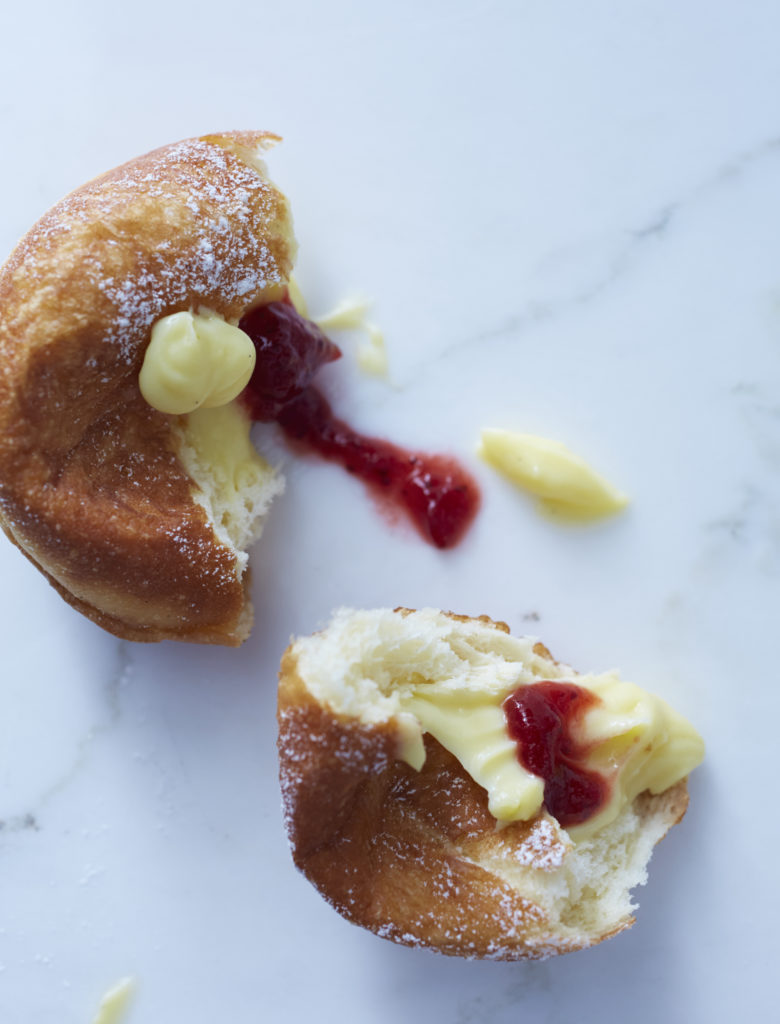
Sufganiyot
Print RecipeIngredients
- Fresh yeast, 30 grams (¼ cup) [or active dry yeast, 12 grams {2¼ teaspoons}]
- Warm water, 30 grams (2 tablespoons)
- All-purpose flour (sifted, 11.7%), 500 grams (4 cups), plus extra for kneading and rolling
- Granulated sugar, 65 grams (¼ cup plus 1 tablespoon)
- Large egg yolks, 2
- Large egg, 1
- Warm whole milk, 120 grams (½ cup)
- Grated orange zest, pinch
- Fresh orange juice, 30 grams (2 tablespoons)
- Brandy (optional), 15 grams (1 tablespoon)
- Fine salt, ½ teaspoon
- Vanilla extract, ½ teaspoon
- Unsalted butter (at room temperature), 90 grams (6 tablespoons)
- Vegetable oil, about 1.8 liters (8 cups) or as needed for frying
- Strawberry jam, 490 grams (1½ cups)
- Confectioners’ sugar for finishing
Instructions
Make the dough: In the bowl of a stand mixer, use your fingers to dissolve the yeast into the warm water. Stir in 10 grams (1 tablespoon) of the flour and 5 grams (1 tablespoon) of the sugar, and set aside until the mixture is bubbling, about 15 minutes.
Add the egg yolks, whole egg, warm milk, orange zest and juice, brandy (if using), salt, vanilla, the remaining sugar, and the flour to the yeast mixture. Attach the dough hook and mix on low speed until the dough comes together, 1 to 2 minutes.
With the mixer running on medium speed, gradually add the butter, a pinch at a time. Continue to mix until the dough pulls away from the sides of the bowl (add a few spoons of flour if needed), is smooth and shiny, and is beginning to climb up the dough hook. This will take about 4 minutes.
Stretch and fold the dough, then let it rise: Turn the dough out onto a lightly floured work surface and lightly dust the top of the dough with flour. Stretch the top piece of the dough until it tears, then fold it on top of the center. Give the dough a quarter turn and repeat, tearing and folding, adding more flour as needed, until the dough isn’t sticky, 2 to 3 minutes. Transfer the dough to a lightly floured bowl, sprinkle the top with flour, and cover the bowl with plastic wrap. Set it aside in a warm and draft-free spot until the dough has doubled in volume, about 1 hour.
Roll and stamp the dough: Set the dough on a lightly floured work surface, and use a rolling pin to roll it into a ½-inch-thick sheet. Use a 2½-inch round cookie or biscuit cutter to stamp out rounds of dough. Stamp them out as close together as possible to minimize the amount of scraps; after pressing the cutter into the dough, twist it before pulling it out from the sheet of dough (to help strengthen the seal so the doughnut puffs nicely during frying). Gather the scraps; press them together; rest for 5 minutes, covered; and then gently reroll them to stamp out a few more sufganiyot. Discard the remaining bits of scraps.
Let the dough proof: Place the dough rounds on a lightly greased (use a little oil) parchment paper–lined sheet pan and cover with a kitchen towel. Let the dough rise in a draft-free spot at room temperature until nearly doubled in volume, 40 to 50 minutes. (At this point, after rising, the dough can be refrigerated for up to 3 hours before frying.)
Fry the dough: Fill a large saucepan with enough oil to reach a depth of 4 inches. Heat the oil over medium-high heat until it reads 350°F on an instant-read thermometer. Start with one sufganiya and fry, turning it with a slotted spoon or frying spider, until both sides are golden, about 2 minutes. Use the spider or slotted spoon to transfer the doughnut to a paper towel–lined plate or sheet pan. Continue frying the remaining doughnuts in batches, taking care not to crowd the pan; otherwise, the oil will cool and the doughnuts will absorb more oil and become greasy. Let the doughnuts cool completely before filling them.
Fill the sufganiyot: Place the jam in a food processor and process until smooth. Scrape the jam into a piping bag fitted with a ¼-inch round tip and insert the tip into the top of a doughnut. Squeeze jam into the doughnut until the jam begins to ooze out of the hole at the top. Repeat with the remaining sufganiyot. Sprinkle with confectioners’ sugar before serving.
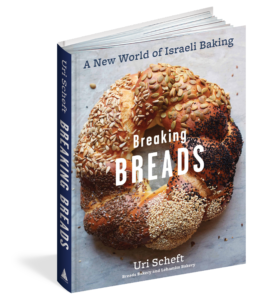 About the Book:
About the Book:
Named one of the Best Cookbooks of the Year by Food & Wine, The Los Angeles Times, The New York Times, The San Francisco Chronicle, and The Washington Post
Israeli baking encompasses the influences of so many regions—Morocco, Yemen, Germany, and Georgia, to name a few—and master baker Uri Scheft seamlessly marries all of these in his incredible baked goods at his Breads Bakery in New York City and Lehamim Bakery in Tel Aviv. Nutella-filled babkas, potato and shakshuka focaccia, and chocolate rugelach are pulled out of the ovens several times an hour for waiting crowds. In Breaking Breads, Scheft takes the combined influences of his Scandinavian heritage, his European pastry training, and his Israeli and New York City homes to provide sweet and savory baking recipes that cover European, Israeli, and Middle Eastern favorites. Scheft sheds new light on classics like challah, babka, and ciabatta—and provides his creative twists on them as well, showing how bakers can do the same at home—and introduces his take on Middle Eastern daily breads like kubaneh and jachnun. The instructions are detailed and the photos explanatory so that anyone can make Scheft’s Poppy Seed Hamantaschen, Cheese Bourekas, and Jerusalem Bagels, among other recipes. With several key dough recipes and hundreds of Israeli-, Middle Eastern–, Eastern European–, Scandinavian-, and Mediterranean-influenced recipes, this is truly a global baking bible.
Buy the Book
Amazon | B&N | Indiebound | Workman
Still need help finding a gift? Message our Holiday Hotline for personalized suggestions.

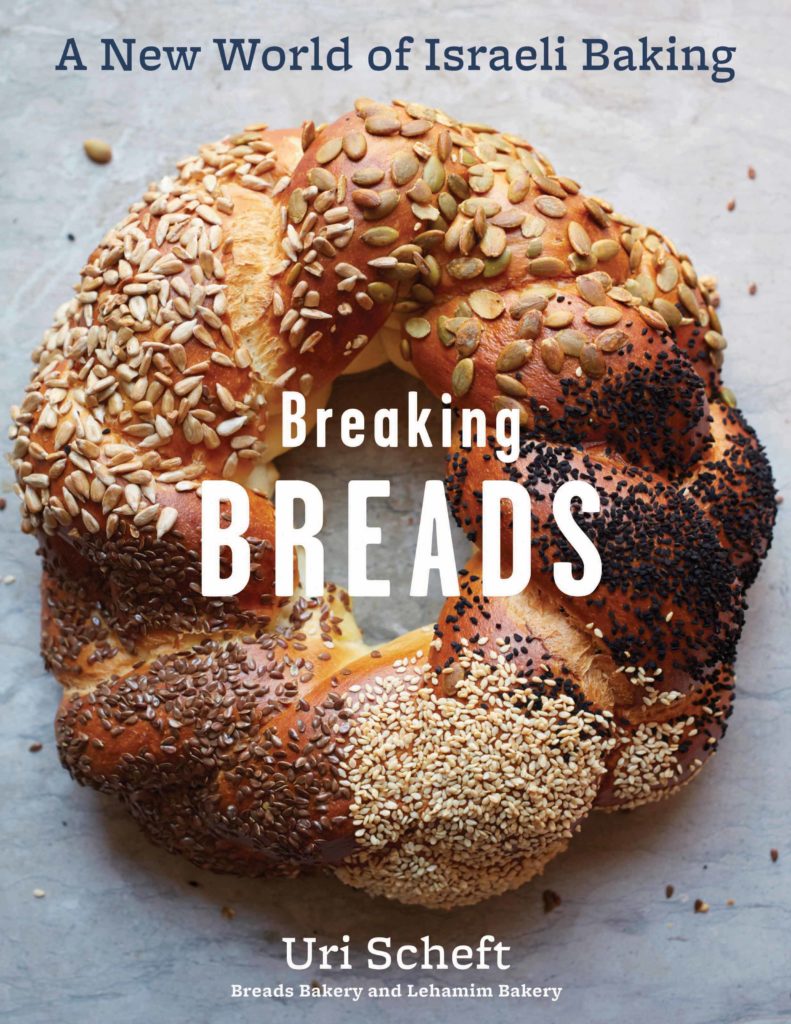

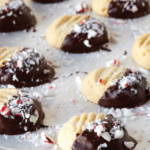
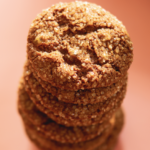

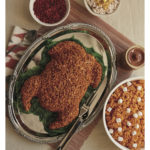
No Comments